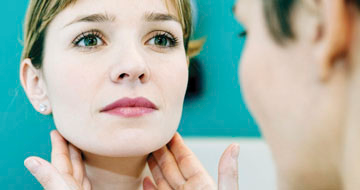
Radiofrequency Therapy : nonsurgical vaginal tightening
You may know that feeling when you look in the mirror one morning and think: “Is that wrinkle on my face new?” Or “Did the skin on my neck always look like that?”
While these changes are natural and normal stages of the ageing process, they can be daunting. It’s not just our altered appearance that can take us by surprise, of course.
Like facial skin, vaginal tissue will almost certainly change too. It might become looser in pregnancy, after childbirth or during and after the menopause – and the medical term for this is vaginal laxity.
Though you won’t be able to see these changes because they occur inside the vagina, you might well be able to feel them – and they can affect everything from loss of bladder control to a decrease in sensation and pleasure during sex.
Even if the changes a woman experiences are relatively small, they can have a big impact on her confidence. We believe that everyone should be empowered to feel their best. That’s why our gynaecologists are passionate about finding effective ways to treat vaginal laxity.
We’re delighted that we now offer radiofrequency therapy to patients at our clinic. It’s a nonsurgical vaginal tightening treatment, that has already delivered some very impressive results.
Here, we take a closer look at how it works, what it does, and why, if you’re interested in maintaining and optimising your vaginal health, you might consider it. The Cleveland Clinic, one of Amercia's top five hospitals, has published more about energy based treatments and you can learn more here.
How does radiofrequency technology help vaginal laxity?
Radiofrequency is used to warm up the lining of the vagina and the vulva. It restructures the collagen and elastin, improves the blood flow and increases the moisture in the vagina, which makes the tissues tighten and contract. This encourages the growth of more collagen and elastin, so the vaginal walls are stronger and plumper.
Though you won’t be able to see the changes in these renewed vaginal walls, you’ll be able to feel them: as well as increased blood flow that will help keep the vagina well lubricated, the plumper walls will be better able to support your bladder – which is good news for the many women who experience urinary incontinence. It can also be used to tighten the labial tissues.
What happens during a radiofrequency therapy appointment?
A slim probe is applied to the vagina and vulva which creates a gentle warming sensation. Some patients describe this as similar to having a warm stone massage.
Will it hurt?
The process is painless, and the only thing you might be aware of is the motion of the probe, and a gentle warming sensation.
How long will it take?
The treatment takes around 15-20 minutes for the vaginal treatment and 10-15 minutes on the vulva. As with all appointments, we like to ensure that nothing is rushed and that you’re always as comfortable and relaxed as possible. There is no downtime – you can carry on with your day as normal following your treatment.
How often should I have radiofrequency therapy?
Consultant Gynaecologist Ms Tania Adib recommends three treatments at approximately weekly intervals for optimum results.
Can radiofrequency therapy be used on the vulva?
“When a woman loses volume from her labia, this can create sagging of the vulva. This can cause discomfort during intercourse and make a woman feel self-conscious if the labia are particularly visible underneath tight clothing. “The radiofrequency therapy that I use improves the condition of the collagen and the elastin in both the vulva and the vagina,” Ms Tania Adib says.
Far from being a purely aesthetic procedure for the vulva, radiofrequency often improves sensation – so as a result, it can dramatically increase a woman’s sexual confidence.
“And maintaining the health of the vagina and vulva can prevent many problems further down the line,” continues Ms Tania Adib.
How do I know if nonsurgical vaginal tightening will be right for me?
If you believe your vagina is not functioning or feeling the same way you want it to, radiofrequency therapy is well worth exploring. It’s particularly effective in treating vaginal laxity shortly after a vaginal childbirth. But equally, during and after menopause, when vaginal atrophy (the thinning and drying of the vaginal walls) is common, the treatment can have a positive impact on everything from painful sex to mild prolapse.
How much does radiofrequency therapy cost?
A single treatment at The Medical Chambers Kensington is £850.
Nonsurgical vaginal tightening at The Medical Chambers Kensington
Our radiofrequency therapy is always carried out by a Consultant Gynaecologist. If you’d like to learn more or make an appointment, please contact our clinic.











